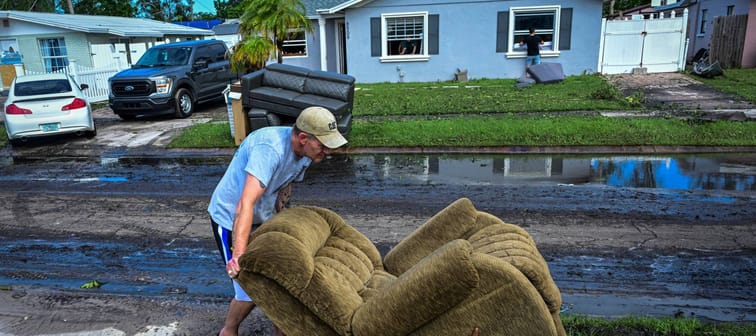Unforgiving storm season
Hurricane Helene, blamed for more than 300 deaths as of Oct. 17, made landfall in the area known as Big Bend, where Florida’s panhandle gives way to the peninsula.
Milton raced in two weeks later, directly hitting Tampa Bay with destructive winds and massive storm surges. Homes that were once admired for their quaint charm are now marred by shattered roofs, waterlogged interiors and uprooted trees.
The storms have fed a seemingly endless preparation-and-recovery cycle, with one storm arriving before full repairs from the previous one are complete.
At the same time, exhausted homeowners are trying to keep pace with ever-increasing insurance premiums resulting from payouts from these storms. Those costs were already well above the national average before the 2024 storm season, and they’re sure to rise again when the season passes.
Discover how a simple decision today could lead to an extra $1.3 million in retirement
Learn how you can set yourself up for a more prosperous future by exploring why so many people who work with financial advisors retire with more wealth.
Discover the full story and see how you could be on the path to an extra $1.3 million in retirement.
Read MoreSkyrocketing insurance costs are driving people out
Florida is no stranger to high insurance costs. Even before Helene and Milton rushed ashore, property owners in the state were paying roughly four times the national average for home insurance.
Even those fortunate enough to find a willing insurer are being met with deductibles so high that covering damage out of pocket seems almost inevitable. More than 30 insurance providers have either reduced their coverage or exited the state altogether.
Insurance isn’t the only worry. Hurricanes in Florida are also stoking strange housing-market dynamics that locals say threaten the history of many of the state’s quaint coastal towns.
Housing inventories are rising in larger Florida cities such as Orlando and Tampa, but demand is falling. In Tampa, which is particularly exposed to storms because of overdevelopment and delayed floodwater defenses, the majority of Tampa’s available homes have seen price cuts.
Property values are dropping, and many homes once seen as valuable investments in a sunny paradise are now regarded as liabilities. Even for potential buyers attracted by reduced prices, the cost of insuring, repairing and fortifying these homes against future hurricanes is a significant deterrent.
Many buyers simply cannot afford the ongoing expense of rebuilding every time a storm hits, and those that can are often wealthy investors who either flip the homes or relocate to the area and, over time, change its feel.
“The price of repairs may mean we lose our character,” Sam Henderson, mayor of Gulfport, Florida, a Tampa suburb that caters to the arts and fishing, told the Tampa Bay Times. “There will be a different kind of people who can afford to live here, moving forward.”
What are the options?
Homeowners have some options, but each has its challenges:
Renting the property. Homeowners could consider renting their property as a vacation rental. But this requires navigating local regulations and investing in repairs to make the property rental-ready. Additionally, the off-season and storm-season risks mean potential rental income may not be steady year-round.
Selling to investors. Real estate investors who specialize in distressed properties or high-risk areas may be willing to buy, but typically at a discount. Homeowners may receive offers well below market value, but this option could allow them to cut their losses and move on.
Renovating for resilience. For those willing to invest in their current property, making storm-resistant upgrades — like impact-resistant windows, elevated foundations and waterproofing measures — can increase the home’s appeal to future buyers.
Seeking state or federal assistance. In some cases, homeowners may qualify for disaster relief programs or grants that can help offset the cost of repairs and insurance. Additionally, the Federal Emergency Management Agency (FEMA) offers programs that assist with mitigation efforts%2C%20and%20within%20NFIP%2D), like installing flood barriers, to protect homes from future damage.
The richest 1% use an advisor. Do you?
Wealthy people know that having money is not the same as being good with money. Advisor can help you shape your financial future and connect with expert guidance . A trusted advisor helps you make smart choices about investments, retirement savings, and tax planning. Try Advisor now.








